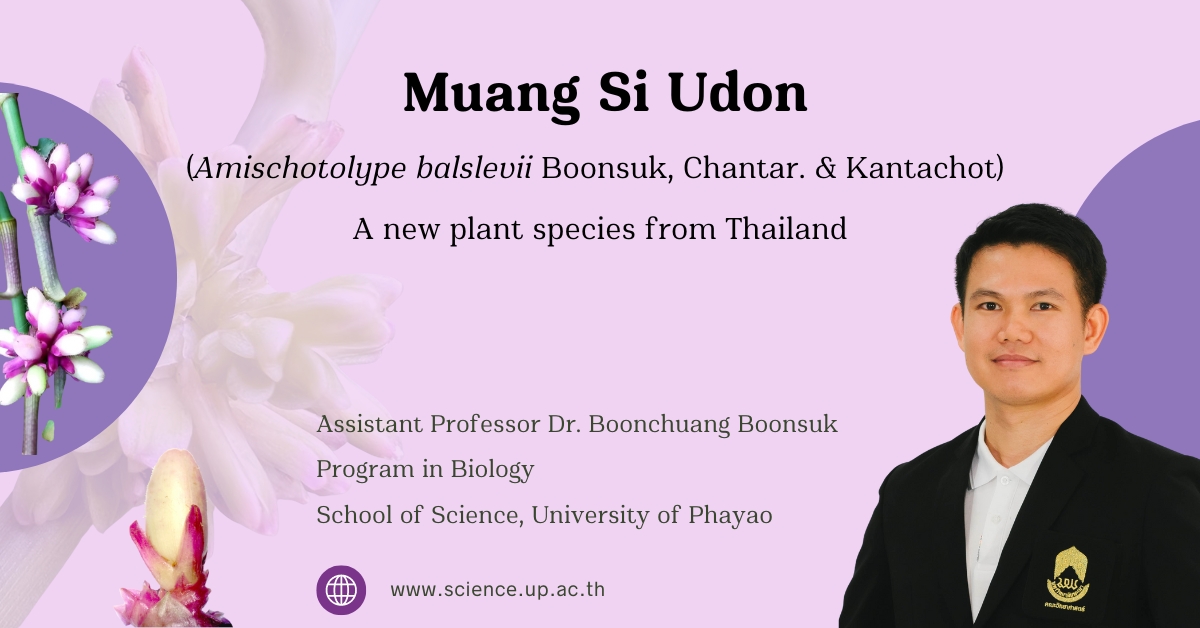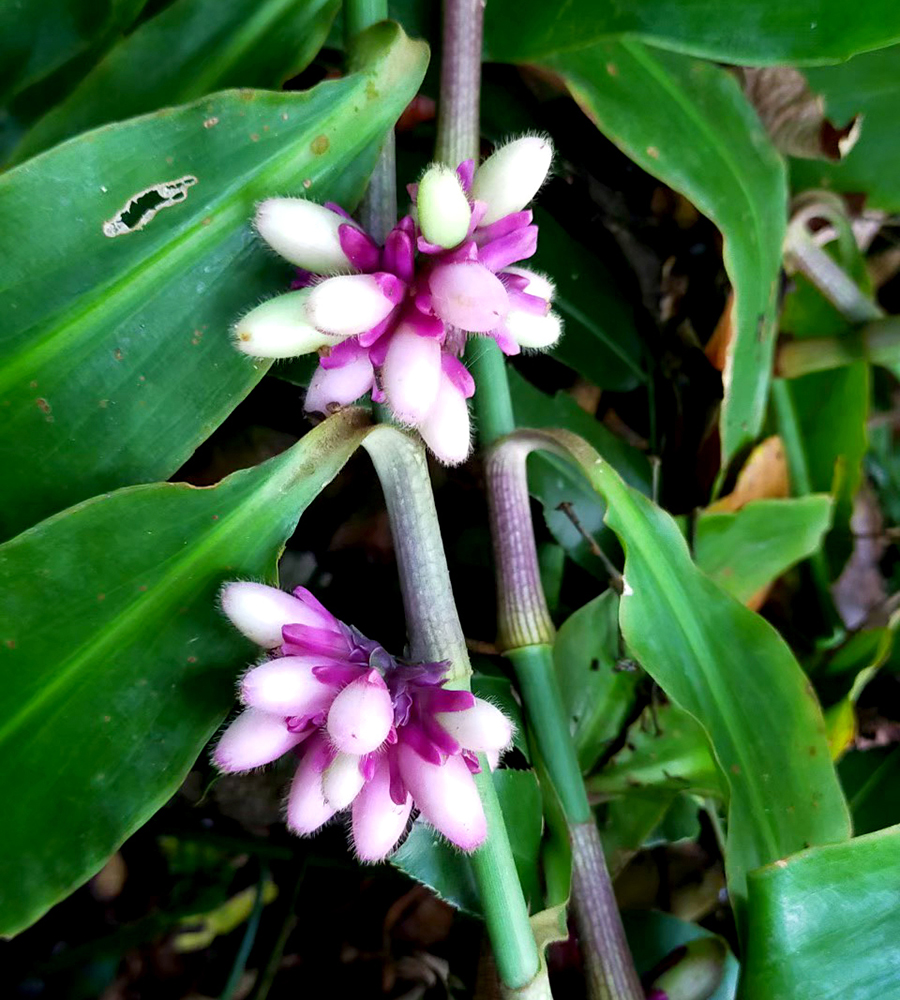
Muang Si Udon (Amischotolype balslevii Boonsuk, Chantar. & Kantachot) : A new plant species from Thailand
Thailand is a tropical region with an abundant number of plant species. Thailand is estimated to have 11,000 flowering plant species. Thai botanists collaborated to establish the Flora of Thailand project, which effectively started researching the country’s flora in 1967. The research and data collection of plant species require extensive collaboration from many expert plant taxonomists. The findings are published in the book Flora of Thailand, which serves as a guide for recognizing various plant families and provides botanical information on the species. This resource is worldwide recognized as an essential guide to Thailand’s plant resources.
The research on the Commelinaceae family for the Flora of Thailand book is being conducted by a research collaboration network that includes Assistant Professor Dr. Boonchuang Boonsuk from the University of Phayao, Professor Dr. Pranom Chantaranothai from Khon Kaen University, and Assistant Professor Dr. Chortip Kantachot from Ubon Ratchathani. This research began in 2021, and the team has already published two studies on different plant groups within the family. The first paper, titled “Notes on tribe Streptolirieae and genus Dictyospermum (Commelinaceae),” was published in the Thai Journal of Botany in 2022. The second paper, “A taxonomic account of Commelinaceae subtribe Cyanotinae in Thailand,” was published in the journal Tropical Natural History in 2022.
The taxonomic study of the genus Amischotolype in Thailand began with a review of relevant references, including the first publication of each species, including both accepted names and synonyms. The study further investigated the type specimens used in the species’ naming, as well as typical dry specimens preserved in herbaria in Thailand and abroad, by employing samples obtained from various parts of Thailand. In addition, the research team went out into the field to explore and collect plant specimens from throughout Thailand, ensuring complete coverage. All ecological data, photographs, and botanical descriptions were provided, providing a comprehensive understanding of all the taxa of the Commelinaceae in Thailand.
During a field investigation in Ban Dung District, Udon Thani Province, in 2022, the research team discovered a new species of Amischotolype, a scrambling herb with small hairs on the nodes or glabrous. The leaf sheaths are hairy just at the mouth, and the leaves are oblong-lanceolate, measuring 24-32 cm long and 4.5-8 cm wide. The upper leaf surface is either glabrous or covered with tiny hairs, but the lower surface is glabrous. The inflorescence has 12-16 flowers per cluster. The sepals are 10-14 mm long, bright green with purple or violet ends, persistent, and glabrous. The petals are 7-8 mm in length and white. The six stamens have filaments that are 9-11 mm long, white, and glabrous, as well as white, oblong anthers that split longitudinally. The ovary consists of three hairy carpels, while the style is white and glabrous. The fruit, or capsule, is elliptical, measuring 16-18 mm long and 8-9 mm wide, white with a purple tint, and hairy at the tip, with two seeds per locule. The seeds measure 6.5-7 mm long and 3.5-4 mm broad, with an orange aril. The plant has distinct features that distinguishes it from other species in Thailand. It resembles A. divaricata but has a smoother leaf surface and sheath. It also has the longest sepals and capsules in the genus, which are purplish-white. This plant has been identified as a new species and named Amischotolype balslevii Boonsuk, Chantar. & Kantachot in honour of Prof. Henrik Balslev, a botanical expert from Aarhus University in Denmark who serves on the Flora of Thailand project committee board and is an editor of the Flora of Thailand publication. The discovery was published in Blumea Volume 69 in 2024. The plant, also known as “Muang Si Udon,” is found along stream banks or in humid parts of evergreen forests. It can be discovered in Thailand’s Loei, Udon Thani, Bueng Kan, Nakhon Phanom, Chonburi, and Chanthaburi provinces, as well as Laos’ Bolikhamxay and Khammouane provinces.
This discovery of a new species from Thailand is consistent with the University of Phayao’s mission and strategic plan to conduct high-quality research and generate knowledge that enhances Thailand’s quality of life and economy, thereby fostering sustainability and increasing global trust in the University of Phayao’s abilities.
